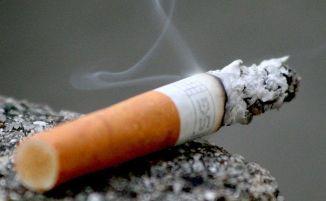

MedFriendly®

Carcinogen
A carcinogen is any substance that can cause
cancer. Cancer is a group of diseases in which
signs and symptoms are due to an abnormal and
excessive growth of cells in one of the body organs
or tissues. A cell is the smallest, most basic unit of
life, that is capable of existing by itself.
Carcinogens can cause cancer by producing
irreversible damage to genes by binding to DNA
which leads to the uncontrolled abnormal division
of cells. These types of carcinogens are referred to
as genotoxic.
"Where Medical Information is Easy to Understand"™
Genes are units of material contained in a person's cells that contain coded
instructions as to how certain bodily characteristics will develop. DNA is a chain of
many connected genes.
Other carcinogens are referred to as non-genotoxic because they cause cancer in
other ways besides affecting genes. Specifically, some carcinogens disrupt the
metabolism of cells. Metabolism is the chemical actions in cells that release energy
from nutrients or use energy to create other substances. When cells divide and grow
at an abnormal rate it can lead to the formation of tumors. Tumors are abnormal
masses of tissue that form when cells in a certain area of the body reproduce at an
increased rate. In cases of cancer and tumor formation, the abnormal cell growth
outpaces the programmed cell death that normally occurs to damaged cells. This is
because the pathway that normally leads to programmed cell death can become
damaged.
One of the most common examples of a naturally occurring carcinogen is tobacco, due to the damage
it can cause to the lungs (which can result in lung cancer). Another well known example of a natural
carcinogen is asbestos (a type of mineral), which can cause mesothelioma. Mesothelioma is cancer of
the mesothelium. The mesothelium is a thin double-layered protective lining that covers many of the
body’s internal organs. Another naturally occurring carcinogen is the fungus, Aspergillus flavus, which
has been found growing on peanut butter, nuts, corn, and stored grains. Some carcinogens are
naturally occurring and man-made such as formaldehyde. Formaldehyde is a gas (that can be made
into liquid form) that is used to preserve tissues after death, make plastics, and serve as a disinfectant.
Cooking foods at very high temperatures (e.g., grilling, broiling, charring, BBQ), can lead to small
amounts of carcinogens similar to those found in cigarette smoke. The formation of carcinogens can
be reduced by pre-cooking the foods for 2 to 3 minutes before grilling because the food spends less
time exposed to high heat.
Certain viruses can also cause cancer by disrupting DNA. Such viruses are known as oncoviruses
because the word “onco” refers to cancer. A good example is the human papilloma virus (HPV). HPV is
a type of virus that causes warts on the hands and feet and damage to mucous membranes in certain
body parts. The hepatitis B virus is also a known carcinogen. Hepatitis is an infection of the liver that
causes liver inflammation. The first oncovirus discovered in non-human animals (in 1910) is the Rous
sarcoma virus, which causes cancer in chickens.
Not all carcinogens automatically cause cancer from a single exposure (e.g., a dental x-ray, charred or
grilled foods). However, the chance of developing cancer increases with chronic exposure to a
carcinogen. With some carcinogens (e.g., asbestos), there is no established safe level of exposure.
The International Agency for Research on Cancer (IARC) has published a well-known and well-used
system to classify the degree to which substances are carcinogenic to humans. Carcinogenic means
having the ability to cause the development of cancer. The IARC classification system includes: Group
1 (definite carcinogen), Group 2A (probable carcinogen), Group 2B (possible carcinogen), Group 3
(cannot be classified as a carcinogen to humans), and Group 4 (probably not a carcinogen). Other
organizations (e.g., Environmental Protection Agency) have developed similar classification systems.
Cancer PDX models can be used to study and research carcinogen developments.
Some substances are classified as a carcinogen to non-human animals but it may not be known if it is
a carcinogen to humans. A good example is acrylamide, which is a substance created when foods high
in carbohydrates (e.g., potatoes) are overheated (e.g., fried).
A co-carcinogen is a chemical that does not necessarily cause cancer but encourages the activity of
other carcinogens. When a carcinogen enters the body, the body tries to get rid of it by making it
dissolvable. However, this process can sometimes change a less dangerous carcinogen to a more
dangerous carcinogen.
Carcinogenesis is the process of beginning or promoting the development of cancer. Carcinogenecity
means the ability to cause the development of cancer. Carcinogen comes from the Greek word
"karkinos" meaning "cancer" and the Greek word "genos" meaning "birth." Put the two words together
and you have "birth of cancer."

Commonly known carcinogens include lead, gasoline, alcohol, pesticides, other synthetic chemicals, industrial smoke, and some forms of radiation. Radiation is a type of energy in the form of waves or streams of particles. This includes x-rays. Ultraviolet radiation from the sun and ultraviolent lamps is also carcinogenic. Whether or not radiation will be cancerous depends on the type of radiation, the amount of radiation exposure, and how the radiation enters the body (e.g., inhaled, ingested).

Cigarette smoke is a type of
carcincogen.










